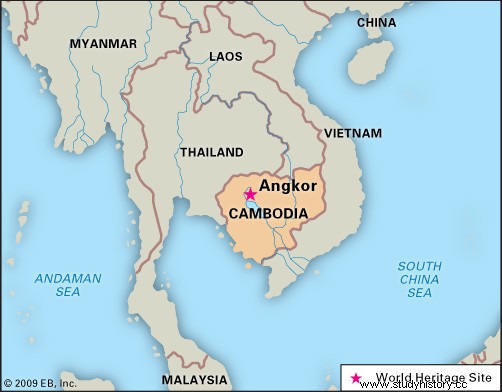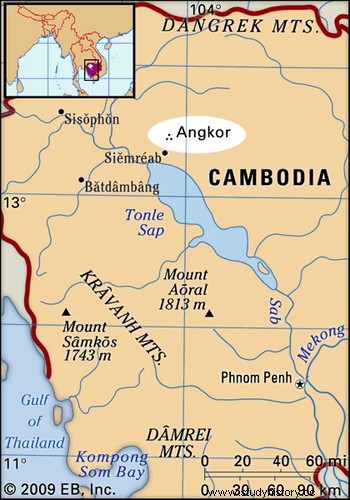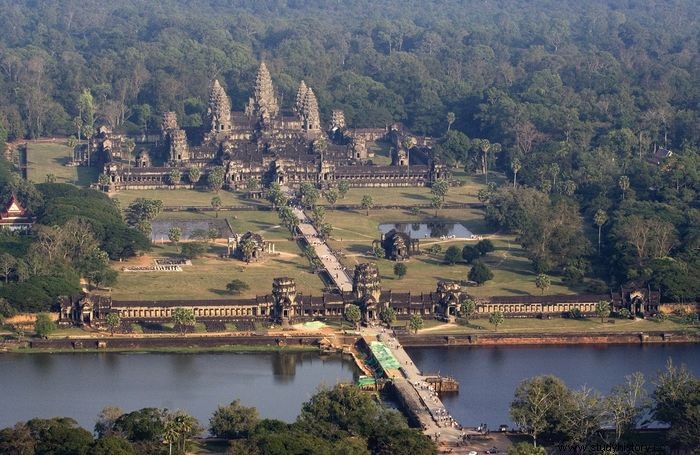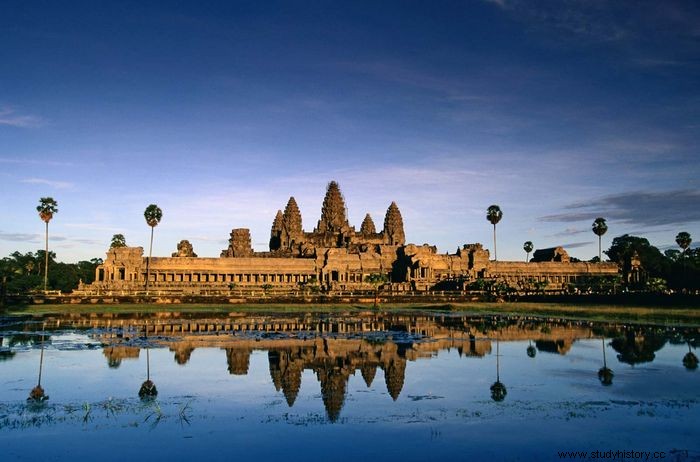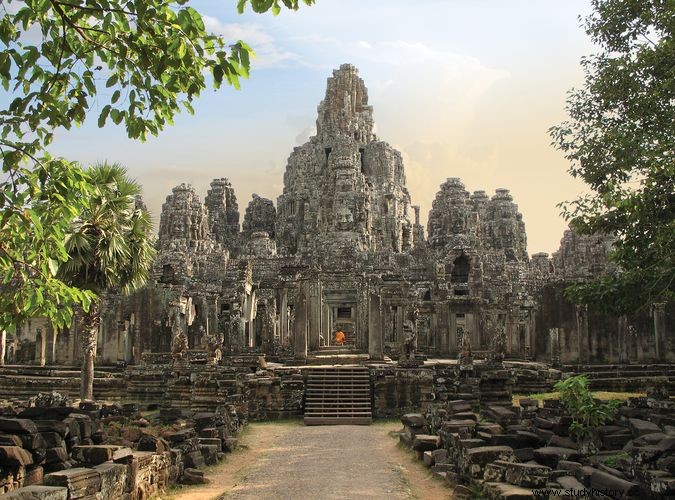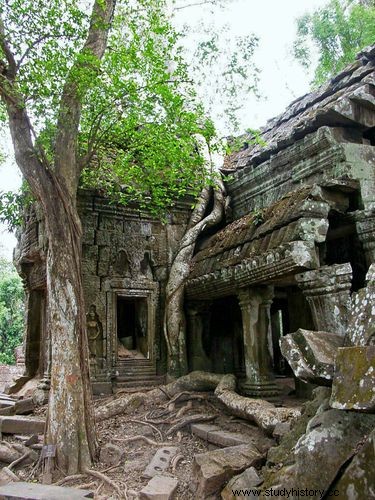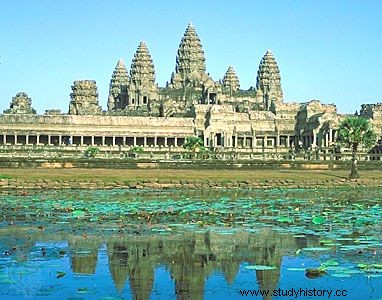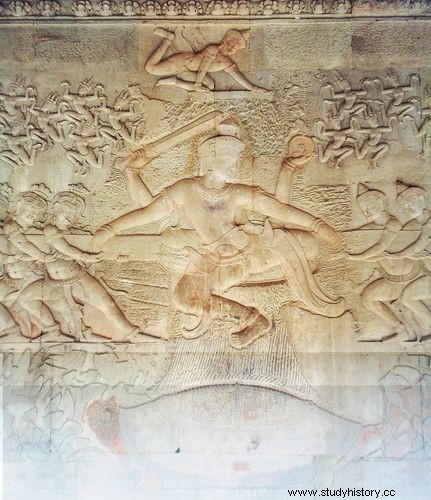Angkor , archaeological site in present-day Northwest Cambodia is 6 km north of the modern city Siĕmréab . It was the capital of Khmer (Cambodian) Empire from the 9th to the 15th centuries, a period considered a classic era of Cambodian history. The most imposing monuments are Angkor Wat , a Temple Complex , used in the 12th century by King Suryavarman II (Reg . 1113–1150 ) was built Angkor Thom , a temple complex built by King around 1200 Jayavarman VII . ( See also Southeast Asian Art:Kingdom of Khmer:9th-13th Century .)
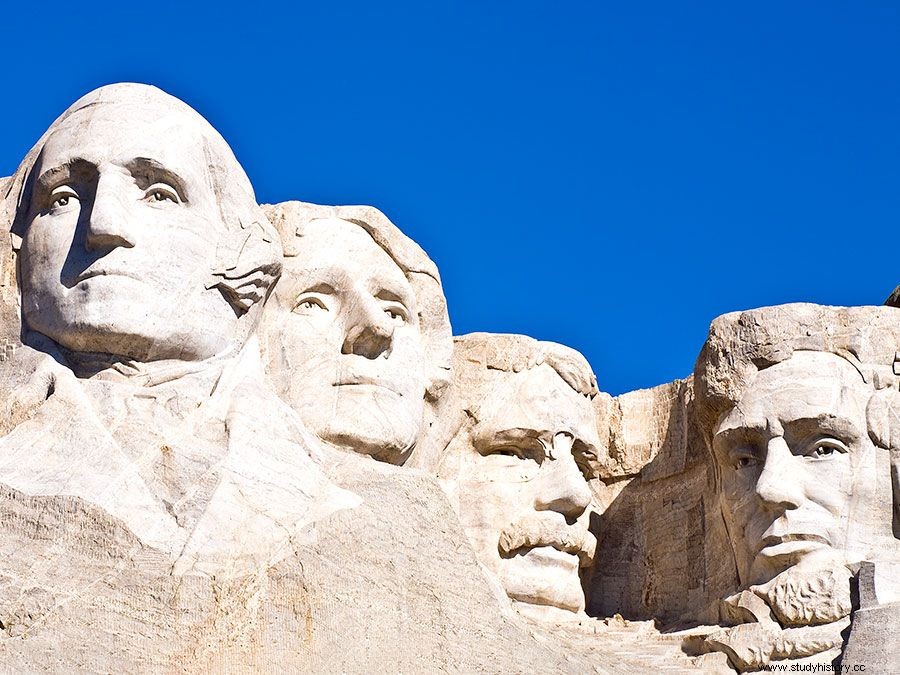 Britannica Quiz National Parks and Landmarks Quiz Whether you want to visit Yosemite, the Eiffel Tower or the Taj Mahal, national parks and attractions welcome millions of visitors each year. Take this quiz to see how much you know - and learn lots of fascinating facts and stories!
Britannica Quiz National Parks and Landmarks Quiz Whether you want to visit Yosemite, the Eiffel Tower or the Taj Mahal, national parks and attractions welcome millions of visitors each year. Take this quiz to see how much you know - and learn lots of fascinating facts and stories! History
The city of Angkor served as the royal center from which a Dynasty by Khmer kings of one of the largest, wealthiest, and most sophisticated kingdoms in history Southeast Asia ruled . From the last decade of the 9th century, when King Yashovarman I made Angkor his dwelling place, until the early years of the 13th century, the kings of Angkor ruled over an area extending north from the tip of the Indochinese Peninsula to modern Yunnan stretched Province China and from Vietnam to west in the direction of Bay of Bengal . Throughout this period, these rulers used the vast resources of labor and wealth to undertake a series of amazing building projects designed to glorify themselves, their gods, and their capital. After the reign of King Jayavarman VII (1181- c. 1220), the power and vitality of the realm gradually , until finally subsided after the armies of the Tai State of Ayutthaya (Ayudhia) captured and sacked Angkor in 1431, the city was partially deserted.
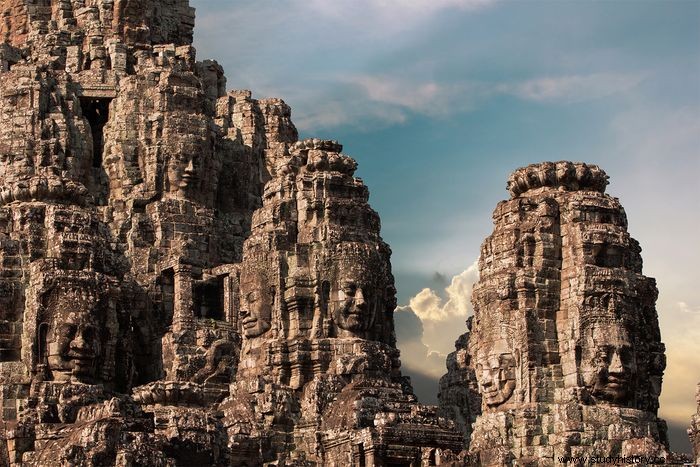
Angkor saw many changes in architecture and artistic style, and there was a religious movement from the Hindu cult of the god Shiva to that of Vishnu and then to a Mahayana Buddhist Cult dedicated to the Bodhisattva dedicated to Avalokiteshvara.
Angkor was a center for the administration and worship of a divine monarch. The city was based on religious and political Notions planned and built the imported from India and adapted to local traditions. Since the time of Yashovarman I, who named the city Yashodharapura, Angkor was conceived as a symbolic universe structured on the model of traditional Indian (Hindu) cosmology. The city was oriented around a central mountain or pyramid temple (symbolic of the Mount Meru , home of the gods) of an architectural Alignment and completion of a natural hillock in the area Phnom Bakheng. Similarly, the central structure of each temple reflected the position of Mount Meru. The outer walls of each temple evoked the mountains believed to circle the edge of the cosmos or world. The vast system of reservoirs, canals, and moats that was one of Angkor's most notable features served primarily as a means of water control and rice irrigation, although it also carried the water of the cosmos.
In the city's later history, the central temples were entirely architectural creations (ie, pyramidal temples) like the Phimeanakas by Suryavarman I (reg . Approx. 1000-50); the Baphuon from Udayadityavarman II (r. 1050–66); and the Buddhist temple of Bayon , the central temple built by Jayavarman VII when he left the city later known as Angkor Thom or "Big City" became known, gave it its more or less definitive form.
Many of the temples at Angkor, all of which gave expression to Indian cosmological and mythical themes, were built in order to provide a locus for cults through which kings and other members of the royal family could be assured of immortality by becoming identified with Shiva or one of the other preeminent gods of the realm. For example, Angkor Wat, which is perhaps the greatest and certainly the most famous of all the temples in the Angkor complex, was built by King Suryavarman II in the 12th century as a vast funerary temple within which his remains were to be deposited, thus symbolically confirming his permanent identity with Vishnu. Inside the third enclosure at Angkor Wat are bas-reliefs running for hundreds of yards that depict scenes from the Mahabharata and the Ramayana, as well as a scene of Suryavarman holding court. Hundreds of statues of apsaras (angelic dancers) also adorn the temple.
In the late 13th century, according to a vivid account by the Chinese commercial envoy Zhou Daguan, Angkor was still a large, thriving metropolis and one of the most magnificent capitals in all Asia. Nevertheless, by then the great building frenzy that had peaked during the reign of Jayavarman VII had clearly come to an end, the new and more restrained religious orientation represented by Theravada Buddhism was on the rise, and the armies of Ayutthaya were founded beginning in the western part of the empire encroach on the Khmer heartland. By the 16th century, when the next available first-hand description was written, the city was deserted and all that remained were the jungle-covered remains of the ancient temples and the Ruins of the once magnificent system of reservoirs and waterways.

